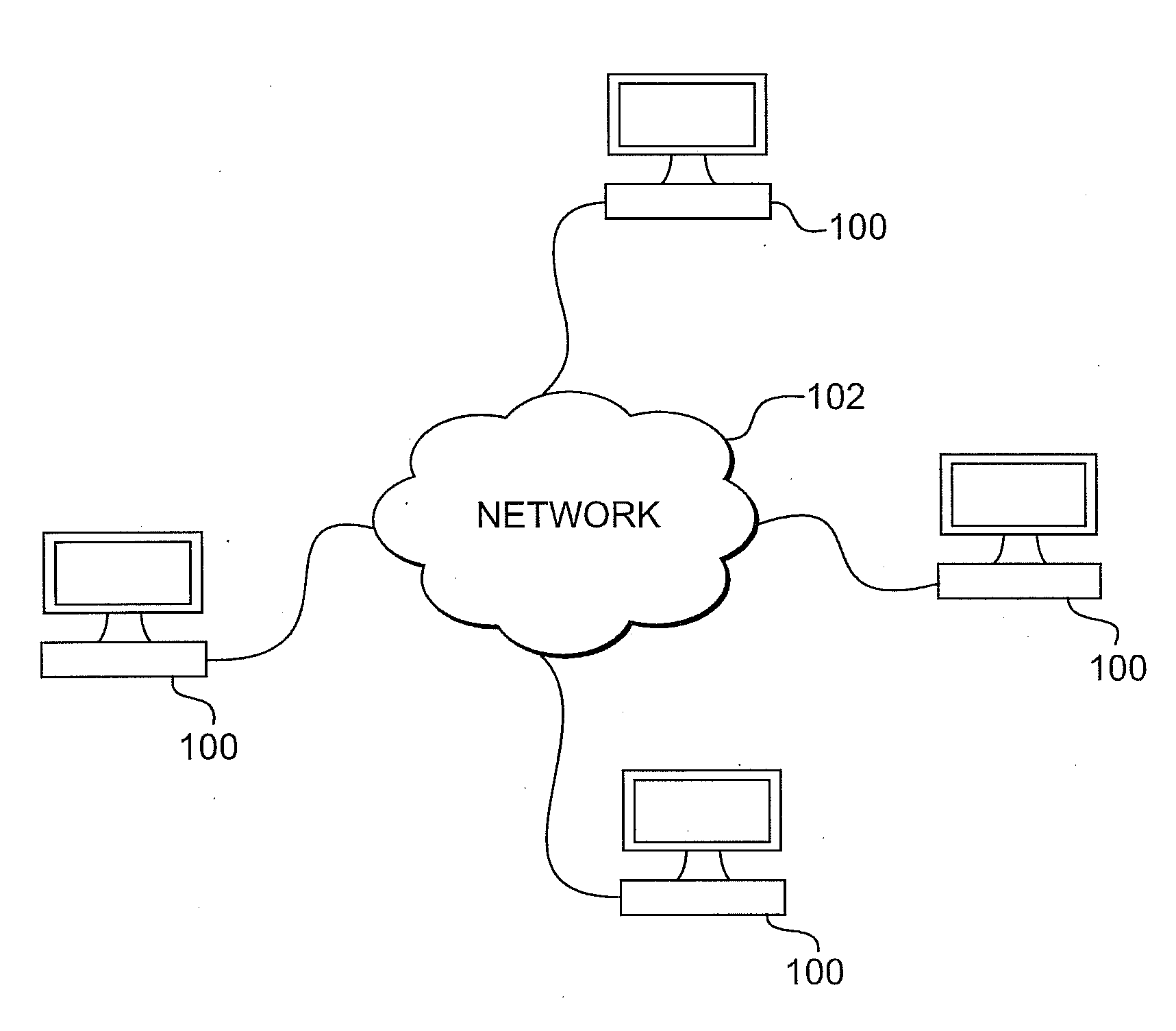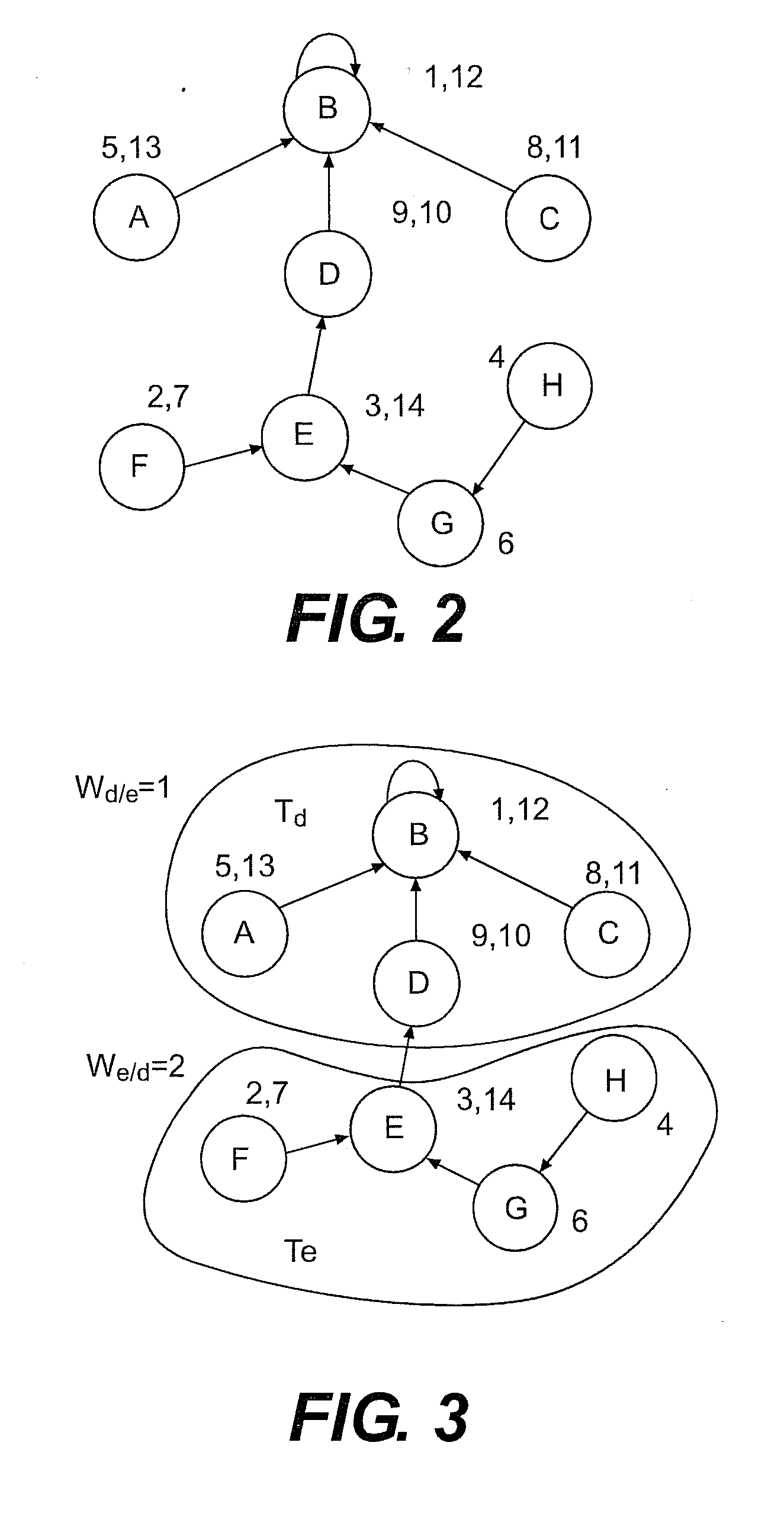Distributed priority queue that maintains item locality
a priority queue and distributed technology, applied in the direction of instruments, multi-programming arrangements, program control, etc., can solve the problems of root node becoming a processing bottleneck, affecting the locality of items, and not being desirabl
- Summary
- Abstract
- Description
- Claims
- Application Information
AI Technical Summary
Benefits of technology
Problems solved by technology
Method used
Image
Examples
Embodiment Construction
[0021]Referring now to the drawings, wherein the showings are for purposes of illustrating preferred embodiments of the invention only and not for the purpose of limiting same, FIG. 1 illustrates a plurality of general purpose computers 100 connected via a network 102 (which may comprise the internet) which computers administer a distributed priority queue according to an embodiment of the present invention and may comprise servers handling calls in a call center. One or more of these general purpose computers 100 are programmed as special purpose computers for carrying out the algorithm described hereinbelow.
[0022]FIG. 2 illustrates a message passing network as a connected graph G, where each vertex is a reliable node (labeled a-h) and each edge is a reliable bi-directional FIFO communication link. This representation makes no assumptions regarding the underlying network architecture. The nodes communicate along a network spanning tree T in G. A minimum spanning tree is preferable ...
PUM
 Login to View More
Login to View More Abstract
Description
Claims
Application Information
 Login to View More
Login to View More - R&D
- Intellectual Property
- Life Sciences
- Materials
- Tech Scout
- Unparalleled Data Quality
- Higher Quality Content
- 60% Fewer Hallucinations
Browse by: Latest US Patents, China's latest patents, Technical Efficacy Thesaurus, Application Domain, Technology Topic, Popular Technical Reports.
© 2025 PatSnap. All rights reserved.Legal|Privacy policy|Modern Slavery Act Transparency Statement|Sitemap|About US| Contact US: help@patsnap.com



